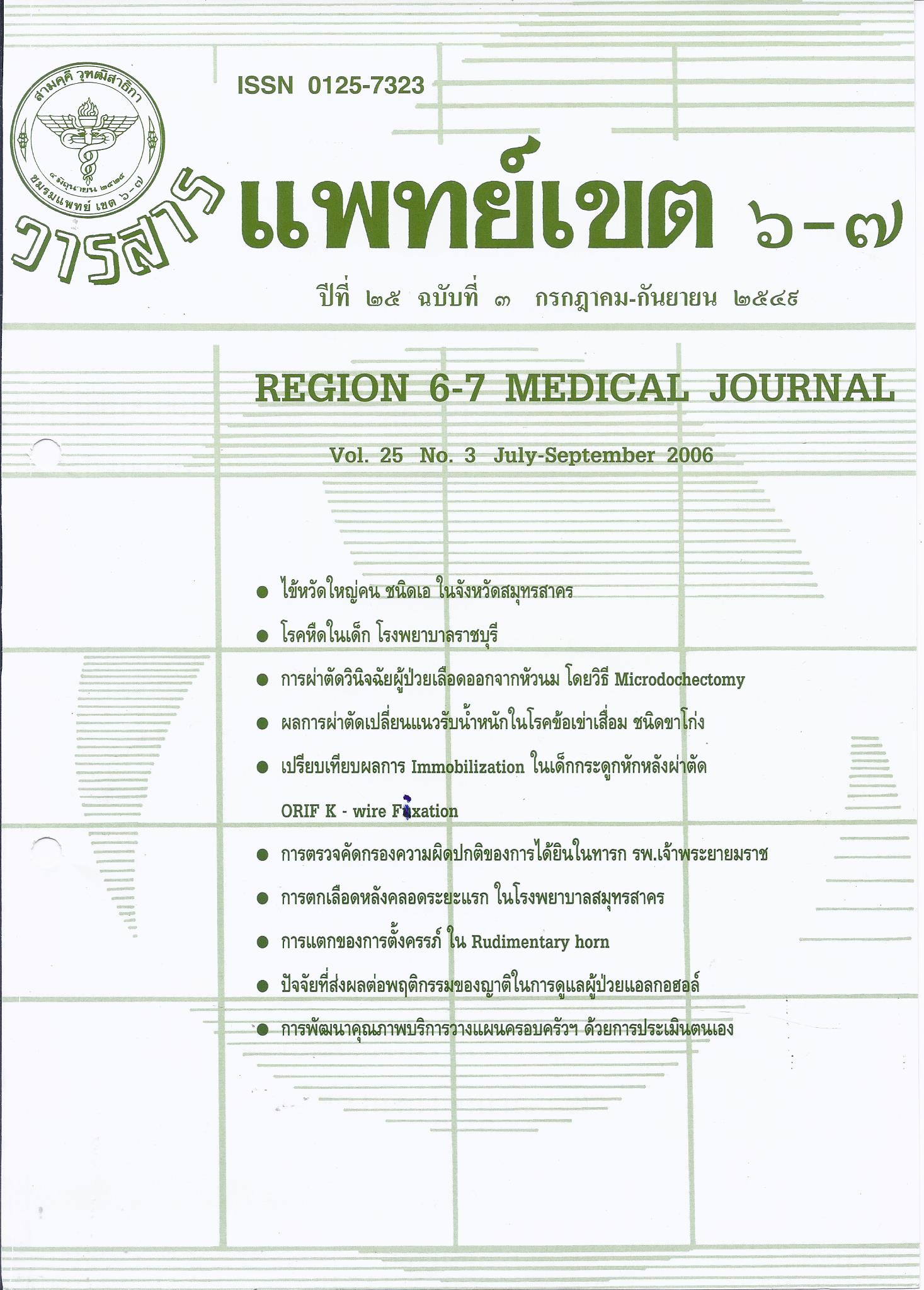การตรวจคัดกรองความผิดปกติของการได้ยินในทารกแรกเกิดด้วยเครื่องมือ Automated TEOAE2 ในโรงพยาบาลเจ้าพระยายมราช
คำสำคัญ:
otoacoustic emissions, OAE, TEOAES, auditory brainstem response, ABR, hearing screening, high risk infants, low risk infantsบทคัดย่อ
This study was purposed to report the incidence and significant risk factors for pathologic hearing screening test in neonates and the feasibility of implementing hearing screening program by using automated transient otoacoustic emissions (TEOAES) device at Chaoprayayommaraj hospital. The one thousand six hundred and sixty infants including inpatients and inpatients misses screened as outpatients were screened with automated TEOAES device. Infants who failed four consecutive OAE tests were referred to Bangkok for reconfirm pathological results by auditory brainstem response (ABR). Univariate analysis using Chi-square. and Fisher’s exact test to identify significant risk factors with a significance level of P ≤ 0.05. During one year of the study, the percentage of infants referred to Bangkok for diagnosis by ABR was about 3.7% for infants at risk for hearing loss (high risk infants), 0.8% for infants from the Neonatal Pathology Unit without risk for hearing loss (low risk infants) and 0.25% for well babies. The prevalence of combined pathologic hearing screening test was 1% (16 infants) with unilateral and bilateral pathologic results in 3 and 13 infants (0.2% and 0.8%), respectively. There were 4 infants with hearing loss had no risk indicators. Only craniofacial anomalies was independent significant risk factor. Median age at screening test performed was 19 days (range 1-139 days) in high risk infants, 8 days (range 1-49 days) in low risk infants and 15 days (range 1-65 days) in well babies. Almost all infants (98.1% in high risk infants, 100% in low risk infants and 100% in well babies) were screened within 3 months of postnatal age. The neonatal hearing screening by using automated OAE device in general hospital is feasible. The program will success by screening during the birth admission, audiology involvement, hospital support, automated data and information management. And follow-up measures need improvement to achieve targets and goals of Joint Committee on infant Hearing (JCIH).
ดาวน์โหลด
เผยแพร่แล้ว
รูปแบบการอ้างอิง
ฉบับ
ประเภทบทความ
สัญญาอนุญาต
ลิขสิทธิ์บทความเป็นของผู้เขียนบทความ แต่หากผลงานของท่านได้รับการพิจารณาตีพิมพ์ลงวารสารแพทย์เขต 4-5 จะคงไว้ซึ่งสิทธิ์ในการตีพิมพ์ครั้งแรกด้วยเหตุที่บทความจะปรากฎในวารสารที่เข้าถึงได้ จึงอนุญาตให้นำบทความในวารสารไปใช้ประโยชน์ได้ในเชิงวิชาการโดยจำเป็นต้องมีการอ้างอิงถึงชื่อวารสารอย่างถูกต้อง แต่ไม่อนุญาตให้นำไปใช้ในเชิงพาณิชย์




